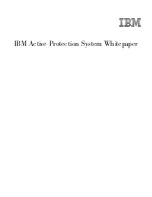
WiseScript Package Editor Reference
118
WiseScript Actions
To complete the dialog box
z
Minimum Files
The minimum number of files to be specified by FILES= in Config.sys. Set this to
zero or leave blank to leave FILES= unchanged.
z
Minimum Buffers
The minimum number of buffers to be specified by BUFFERS= in Config.sys. Set this
to zero or leave blank to leave BUFFERS= unchanged.
Set SVS Exclude Entry
This SVS script action sets an SVS exclude entry on the destination computer. You can
set a layer exclude entry or a global exclude entry. A layer exclude entry applies to a
specific layer on a computer, while a global exclude entry applies to every layer on a
computer. This action appends its exclude entry to any existing exclude entries.
You set an exclude entry to exclude files from a specific layer or any layer on a
computer. By default, when an application layer generates files, those files are
redirected to the application’s writeable sublayer. If the layer is reset, the files in the
writeable sublayer are lost. With an exclude entry, the files are saved in the base file
system and are not lost.
To remove an SVS exclude entry, use the Remove SVS Exclude Entry action.
See
Remove SVS Exclude Entry
on page 108.
To complete the dialog box
z
Layer GUID
For a global exclude, leave this blank. For a layer exclude, enter the layer’s GUID
(globally unique identifier) or a variable that represents the layer’s GUID. If you
enter the layer’s GUID, do not include the { } brackets.
For information on creating a variable for a layer’s GUID, see
Create SVS Layer
on
page 66 and
Find SVS Layer GUID
on page 85.
z
Exclude Type
Select the type of exclude entry.
z
Exclude entry text
If you select Extension in the Exclude Type section, type the extension. You can
specify only one extension per action. If you select one of the directory options in
the Exclude Type section, type the directory. For a directory, you can use a
WiseScript variable that resolves to a valid path. For example,
%PROGRAM_FILES%.
z
Return variable
(Optional.) Enter a name for the return variable. When this script action runs
successfully, either 0 or 1 is placed in this variable.
Set Variable
This action sets the value of a variable by providing a literal value, by modifying the
variable’s existing value, or by evaluating an expression.
















































